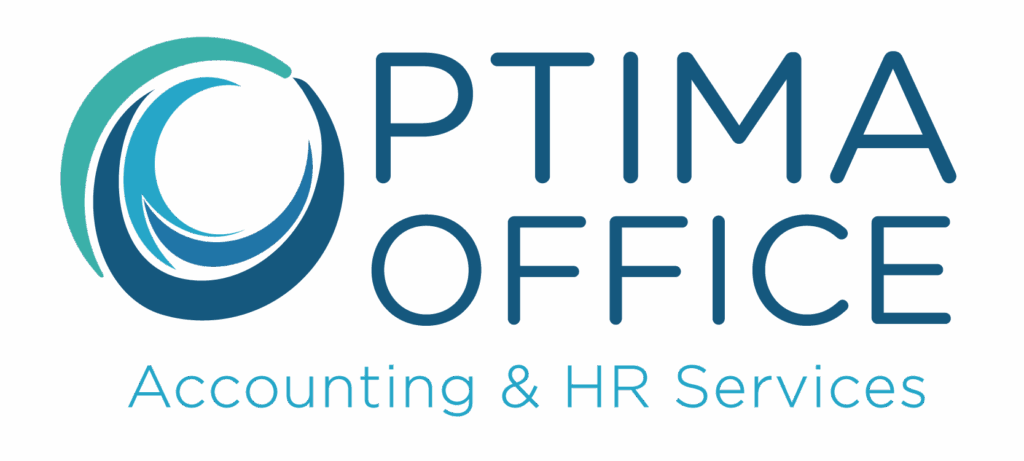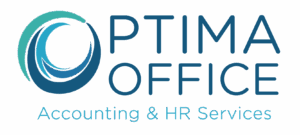Why GAAP for Nonprofits is Your Secret Weapon for Trust and Transparency
GAAP for nonprofits is a set of accounting standards that ensures your organization’s financial reporting is consistent, transparent, and trustworthy. Here’s what you need to know:
Quick Answer: What GAAP for Nonprofits Covers
- Use accrual accounting – Record income when earned and expenses when incurred
- Classify net assets properly – Sort funds into “with donor restrictions” and “without donor restrictions”
- Allocate expenses by function – Break down costs into program, administrative, and fundraising
- Prepare four key statements – Statement of Financial Position, Statement of Activities, Statement of Functional Expenses, and Statement of Cash Flows
- Report in-kind contributions – Document and value donated goods and specialized services
- Maintain detailed records – Keep transaction documentation ready for audits and Form 990
As a nonprofit leader in Southern California, your passion is your mission, not accounting. Yet, donors, grantmakers, and the IRS all expect your books to follow GAAP (Generally Accepted Accounting Principles). Non-compliance risks your funding, audit success, and even your tax-exempt status.
Unlike for-profits, which prioritize profit, nonprofit accounting’s main goal is financial transparency. GAAP provides the framework to clearly show stakeholders how their donations advance your mission. This guide simplifies GAAP for nonprofits, breaking down everything from core principles to practical steps, making compliance achievable.
What is GAAP and Why is it Crucial for Nonprofits?
GAAP (Generally Accepted Accounting Principles) is the rulebook for honest, consistent financial reporting in the U.S. For nonprofits, it ensures consistency, comparability, and transparency, which are vital for donors, board members, and grantmakers to understand your financial story.
The Financial Accounting Standards Board (FASB) sets these standards, with historical input from the American Institute of Certified Public Accountants (AICPA). GAAP compliance builds credibility. Grantmakers take you seriously, auditors understand your reports, and major donors feel confident.
Legally, if your nonprofit receives over $750,000 in federal funding, GAAP compliance is mandatory for your audit. Furthermore, the IRS Form 990, essential for maintaining tax-exempt status, is built on GAAP principles. Following these standards isn’t just good practice; it’s often the law.
The 10 Core Principles of GAAP
GAAP is built on ten core principles that shape how transactions are recorded. Key principles include:
- Regularity and Consistency: Following the rules and using the same accounting methods year after year for comparability.
- Sincerity and Prudence: Ensuring reports are unbiased, accurate, and grounded in fact, not speculation.
- Permanence of Methods: Sticking with a chosen accounting method unless there’s a compelling reason to change.
- Non-Compensation: Reporting income and expenses separately, rather than netting them, for full transparency.
- Continuity and Periodicity: Assuming the nonprofit will continue to operate and breaking down financial reporting into regular periods like months or quarters.
- Materiality and Utmost Good Faith: Disclosing any information significant enough to influence a decision and assuming all parties act with integrity.
If you want to explore these principles in more depth, you can find more on the 10 GAAP standards from authoritative accounting resources.
Why GAAP is the Standard for Nonprofits
While other frameworks like IFRS exist globally, GAAP for nonprofits is the standard in the United States. GAAP is rules-based, providing specific instructions, whereas IFRS is more principles-based. This U.S. focus is crucial because American regulators, funders, and the IRS all expect GAAP-compliant financial statements.
Following GAAP means you’re speaking the language of the U.S. nonprofit sector, which is essential for grant applications, audits, and building donor trust. Embracing GAAP demonstrates a commitment to accountability and professionalism, proving you’re serious about your mission. For more info about Accounting for Non-Profits, we offer resources designed for organizations like yours.
Key Nonprofit-Specific GAAP Requirements
Nonprofit finances are unique, focusing on stewarding donations and allocating expenses to mission-driven programs. GAAP for nonprofits provides specific guidance for these characteristics, from categorizing donations to reporting volunteer services.
Mastering Fund Accounting and Donor Restrictions
A key differentiator for nonprofit accounting is that not all money can be treated as one large pool. This is the basis of fund accounting, where GAAP requires classifying net assets based on donor intent.
- Net Assets Without Donor Restrictions: These are flexible funds your organization can use as needed to support its mission, covering general operations or new initiatives as determined by your board.
- Net Assets With Donor Restrictions: These funds come with donor-specified conditions. They are divided into two types:
- Temporarily Restricted Funds: These have conditions that will be met over time or by a specific action (e.g., funds designated for a 2025 youth program). Once the restriction is fulfilled, the funds become unrestricted.
- Permanently Restricted Funds: These are typically endowments where the original principal must be preserved forever. The organization can use the investment income generated, but the core gift remains intact as a lasting legacy.
Honoring donor restrictions is a legal and ethical obligation. Misusing these funds can lead to lawsuits, IRS penalties, and a devastating loss of public trust. Proper fund accounting is therefore essential for building and maintaining donor confidence.
The Essentials of Functional Expense Allocation
Functional expense allocation is a powerful storytelling tool unique to nonprofits. GAAP requires you to report not just what you spent money on (e.g., salaries, rent), but why you spent it. This demonstrates how efficiently you are delivering on your mission. Expenses are broken down into three categories:
- Program Services Expenses: Direct costs of delivering your mission, such as veterinary care for an animal shelter or art supplies for an education program.
- Administrative Costs: Management and general expenses that keep the organization running, like accounting services, insurance, and office supplies.
- Fundraising Costs: Investments made to secure future support, including grant writing, special events, and marketing your nonprofit.
This functional breakdown is required for the IRS Form 990 and is crucial for demonstrating efficiency to donors and grantmakers. Showing a high percentage of spending on program services proves your focus on mission delivery over overhead.
Reporting In-Kind Contributions and Specialized Services under GAAP for Nonprofits
In-kind contributions, such as donated goods and volunteer services, are vital to nonprofits. Reporting them under GAAP requires following specific rules. Not all contributions are recorded on financial statements.
GAAP requires reporting donated services only if they meet one of two criteria:
- The service creates or improves a nonfinancial asset (e.g., a contractor building an office).
- The service involves specialized skills the nonprofit would otherwise have to purchase (e.g., legal counsel from an attorney or accounting services).
These contributions, along with donated goods, must be recorded at their fair market value—what you would have paid for them. For example, if a lawyer whose rate is $300/hour donates 10 hours, you record a $3,000 in-kind contribution.
Properly reporting these contributions provides a complete picture of your community support and total economic impact, going beyond simple compliance. For more details, see FASB’s guidance on contributed nonfinancial assets.
Putting GAAP for Nonprofits into Practice: Statements and Compliance
Putting GAAP for nonprofits into practice means adopting the right methods and maintaining meticulous records. The cornerstone is the accrual accounting method, where income is recorded when earned and expenses when incurred, providing a more accurate financial picture than cash-based accounting. This requires rock-solid record-keeping of every transaction, which is essential for decision-making and preparing for a Nonprofit Best Audit.
Nonprofit financial statements have some key differences from their for-profit counterparts:
| Nonprofit GAAP Financial Statements | For-Profit Counterparts |
|---|---|
| Statement of Financial Position | Balance Sheet |
| Statement of Activities | Income Statement / Operations |
| Statement of Functional Expenses | (No direct equivalent) |
| Statement of Cash Flows | Statement of Cash Flows |
| Notes to Financial Statements | Notes to Financial Statements |
The Four Essential Nonprofit Financial Statements
Under GAAP, nonprofits use a specific set of financial statements to tell a complete story of their financial health and mission impact.
- The Statement of Financial Position, the nonprofit’s balance sheet, provides a snapshot of assets, liabilities, and net assets. Its key feature is the clear separation of net assets with and without donor restrictions.
- The Statement of Activities, similar to an income statement, shows revenues and expenses over a period (like a fiscal year). It tracks how net asset balances changed, maintaining the crucial distinction between restricted and unrestricted funds.
- The Statement of Functional Expenses is unique to nonprofits and vital for demonstrating stewardship. It breaks down all costs by both their nature (e.g., salaries, rent) and their function (program, administrative, or fundraising), showing donors how efficiently their contributions are being used.
- The Statement of Cash Flows tracks the actual movement of cash through operating, investing, and financing activities. It helps stakeholders understand the organization’s liquidity and how cash is being generated and used.
- Finally, the Notes to Financial Statements provide essential context, explaining accounting policies, detailing donor restrictions, and clarifying information in the main statements.
Practical Steps for Ensuring GAAP Compliance
Achieving ongoing GAAP compliance can be managed with these practical steps:
- Adopt Accrual Accounting: Transition from a cash basis to accrual accounting for a true picture of your financial position.
- Maintain Meticulous Documentation: Keep a clear paper trail for every transaction, including invoices, receipts, and grant agreements.
- Implement Strong Internal Controls: Establish clear policies for expense approval, cash handling, and asset management to reduce risk and ensure data accuracy.
- Reconcile Accounts Monthly: Regularly reconcile bank and credit card statements to catch discrepancies early.
- Prepare Regular Financial Statements: Generate your four essential GAAP statements monthly or quarterly to monitor financial health and make informed decisions.
- Stay Current on Regulations: Keep up with evolving tax laws and accounting standards by checking IRS requirements for your state and FASB updates.
The Payoff of Compliance: Benefits, Risks, and Getting Help
Adhering to GAAP for nonprofits requires effort, but the rewards are substantial, and the risks of non-compliance are too great to ignore.
Benefits of Compliance and Consequences of Non-Compliance
GAAP compliance directly builds trust. When financial reports are clear, donors see their impact, turning one-time givers into loyal supporters. Grantmakers often require GAAP-compliant financial statements to even consider an application, making compliance a gateway to funding. Beyond fundraising, accurate financial data empowers your leadership team to make better strategic decisions. It also underpins your IRS Form 990 requirements, helping maintain your tax-exempt status and ensuring smoother audits. A clean audit opinion is a powerful credential that boosts credibility.
Conversely, non-compliance carries severe risks. Audit issues and qualified opinions are major red flags for funders. Reputational damage can spread quickly, making it harder to attract donors and volunteers. The financial fallout can be devastating, with grantors withdrawing funding and, in severe cases, investigations by the IRS or state attorneys general that could lead to fines or even revocation of your tax-exempt status.
Leveraging Software and Professional Expertise
The good news is you don’t have to manage GAAP compliance alone. Modern fund accounting software can automate many tasks, from tracking restricted funds to generating functional expense reports. However, software is only as good as the people using it.
Professional expertise is crucial, but hiring a full-time finance team is often too costly for small and mid-sized nonprofits. This is where Optima Office comes in. Our brand promise is simple: you get the benefits of a complete finance department for a fraction of the cost of hiring internally.
We provide fractional CFOs, controllers, and bookkeepers who specialize in nonprofit accounting. Our rapid deployment model—typically within three to five days—ensures you get the right expertise quickly. Our team helps nonprofits across San Diego and Southern California manage accrual accounting, track donor restrictions, and prepare the essential financial statements that tell your story. We handle the complexities of GAAP for nonprofits so you can focus on your mission. We understand The Role of Bookkeepers, Controllers, and CFOs and provide that expertise without the full-time price tag, allowing you to maximize impact and minimize risk.
Conclusion
GAAP for nonprofits is more than a set of rules; it’s a powerful tool for storytelling. By following GAAP, you demonstrate accountability, build trust with donors and grantmakers, and empower your board with the data needed for strategic decisions. Practices like classifying net assets, allocating functional expenses, and preparing the four key financial statements transform numbers into a clear narrative of your impact.
While compliance requires diligence, the result is a stable financial foundation that frees you to focus on your mission. Organizations that accept GAAP don’t just survive; they thrive, attracting more support and making a greater difference.
At Optima Office, we know your passion is changing lives, not crunching numbers. Our team specializes in helping nonprofits in Southern California and beyond steer the complexities of GAAP for nonprofits. We provide the fractional CFO, controller, and bookkeeping expertise you need, deployed quickly to fit your budget and requirements. Let us handle the numbers, so you can focus on amplifying your impact.







